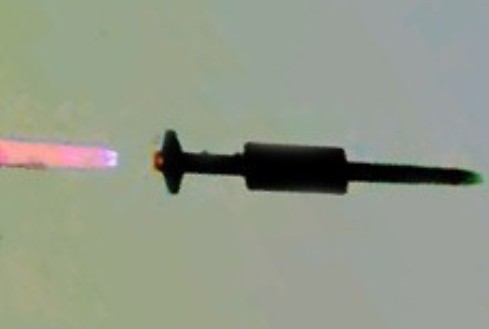Carriage trials of Astra Bvr Missiles begins on Su-30 -
Carriage trials of Astra Bvr Missiles begins on Su-30 | idrw.org
Corridors in the Missile Complex here are abuzz with the extensive carriage trials of 'Astra' with Sukhoi-30 aircraft in Pune. 'Astra,' theBeyond- Visual-Range (BVR), Air-to-Air Missile, has been indigenously developed by the Defence Research and Development Laboratory (DRDL) here under the Integrated Guided Missile Development Programme of India. A team of scientists and other officials from DRDL are already in Pune and the carriage trials which began on November 29 are expected to continue until mid or last week of December spread over at least two scores of sorties.
Development trials of Astra in December 2012 from Integrated Test Range at Chandipur, Odisha, were successful in targeting, Lakshya, the Pilotless Target Aircraft (PTA). However, the litmus test after integrating the Beyond-Visual-Range Air-to-Air Missile (BVRAAM) with Su-30 is still pending. It is to be mentioned that after much wait and delay involving almost 10 years of development trials by Defence Research and Development Organisation (DRDO) since 2003, the missile has finally been integrated with Su-30 for the user trials by the Indian Air Force (IAF).
The missile is being developed to lace up or arm various IAF aircrafts including Tejas, Mirage 2000, Su-30 MKI and even the Sea Harrier. Official sources disclosed that every system and sub-system along with various parameters is being tested one by one to avoid any repetition of these tests. These carriage trials shall be assessed on a modified Su-30 aircraft involving various parameters with respect to missile's compatibility with the aircraft in terms of avionics etc.
Astra can carry a 15kg High Explosive warhead at a Mach 4 speed. It can engage maneuvering targets moving at high supersonic speeds and varying distances and heights and has a proximity fuse. A laser fuse has been developed by DRDO while Software Development Institute (SDI) of the IAF in Bangalore using the Sukhoi test rig has been carrying out the electronic integration of aircraft avionics with Astra on-board equipment. The missile itself can be launched from various altitudes with varying ranges
The 3.8 metre long, single stage, solid fuelled missile is finally expected to have two different versions for different altitudes and ranges including
Astra Mark-I which shall have a range of 44km and Astra Mark-II with a range of over 100km. Astra can cruise at various altitudes while evading radar and intercepting and engaging the 'supersonic targets' by manoeuvring its speed accordingly. Armed with superior Electronic Warfare capabilities, its Electronic Counter-Counter Measures lends it immunity from being followed and targeted.
In the absence of a low-cost indigenous BVRAAM, IAF has been importing missiles from Israel, Russia and France to equip its fighter fleet. DRDO is aiming at clearing 'Astra' for induction into the IAF by 2015. So far, the successfully tested systems of the missile include the aerodynamics, propulsion system, control and guidance systems, dual mode guidance, night trials, various angles of attack and performance under various weather conditions etc. during its development trials











